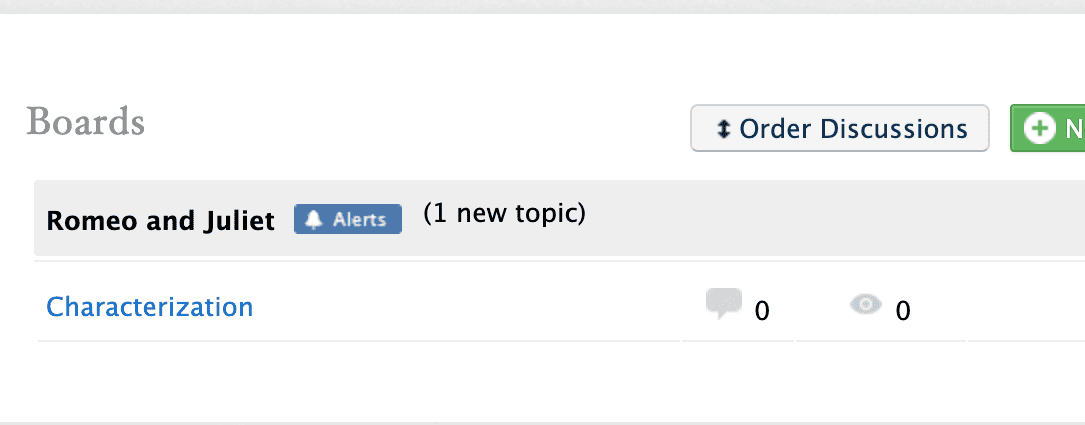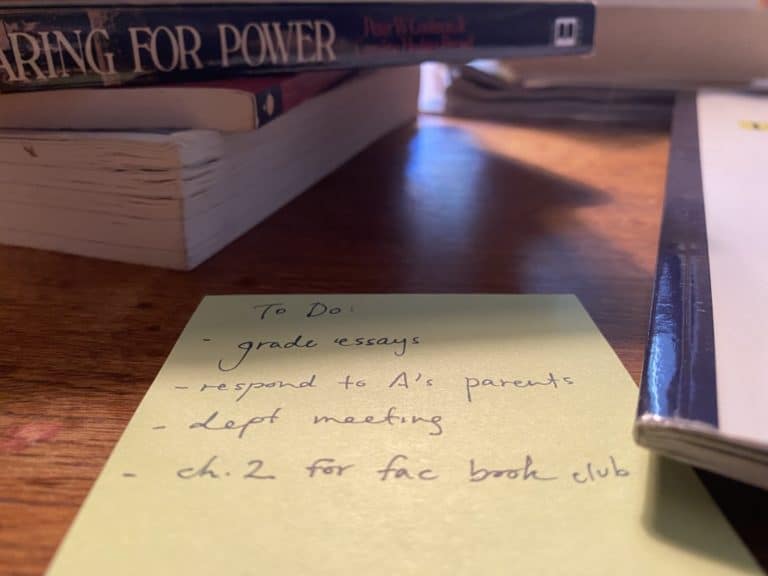Office Hours: Jamie Poskin

The Office Hours series recruits experts from within the field of education and beyond to share their specific knowledge and perspective on a topic or a series of topics. This week, IRT spoke with Jamie Poskin, Founder of TeachFX.
So excited to meet you, Jamie. I’ve been reading a lot about TeachFX, and I’m so excited to hear more about it. First, can you tell us a little bit about yourself? What were you like as a student growing up? What has education and learning, across time, meant to you?
I’ve always been someone who believes deeply in the power of education. My grandmother started a really wonderful preschool, and my mother then taught there for 30 years. I laugh because my grandma will brag about how now they have all this research that backs up the creative stuff she was doing with kids way back in the day. My mother and grandmother both had a huge impact on me, making me a lover of learning – from preschool all the way through grad school.
After graduating college I wanted to do service. I believe strongly in service; I was – and still am – very idealistic. And I wanted to teach. So I founded a volunteer teaching program at a high school in Harlem. It was a true volunteer program: the idea was to live simply and serve the kids. It’s a 2-year teaching program that now has over 30 alumni. Being part of that program is one of the things I’m most proud of. I started in 2006. I taught math and English; I was also the athletic director and coached basketball, soccer, and baseball.
Ten years later, I went to get my MBA and MA in Education at Stanford, and while doing research, a principal I was interviewing suggested an idea to me that later became TeachFX. I was researching why teachers left the profession. I had my own idea about using video to capture and share great teaching moments, and I showed it to this principal, but he told me that my solution didn’t really solve his problem. His problem was that he didn’t have enough time to observe teachers frequently, whether in-person or through video, to give them enough feedback to truly improve their pedagogy. He suggested using some of the “fancy” technology we have at Stanford to automate his job by providing teachers with metrics about what happened in the classroom. I didn’t understand what he meant by “metrics,” and he explained: look at how much time the teacher’s talking vs. the kids, how many open-ended questions the teacher asks, and whether the teacher is using wait time. I took the idea and ran with it.
What motivated you to found TeachFX? What are some of your founding principles?
For me, starting something, it’s all about the impact it can make on the world. I see education as the main lever for change in society. And to make meaningful change in education, you have to focus on the teacher. There are five million teachers in this country. Paying teachers more isn’t the solution by itself; you have to find a way to help people become great teachers. A question that drives me is: How do you build something that empowers someone to be great at what they do?
Have there been surprises?
One thing that surprised me about teaching was that my classes were rarely observed. Later, that lack of feedback came up a lot in my interviews with teachers who had left the profession. We need a sense of mastery and growth to feel fulfilled. As a K-12 teacher, you don’t always get a lot of feedback. How do we provide feedback to teachers that can make them feel they’re growing and building mastery?
The big surprise to me in developing TeachFX was how powerful talk ratio is. Now, TeachFX does way more than measure talk ratio. But at the beginning, TeachFX simply told you how much you talked vs. how much your kids talked. What amazed me was how powerful that simple piece of data was, and how indicative it was of good teaching. With permission from teachers, I listened to over 1,000 hours of audio in the first year of TeachFX, all while I was reading this research about how talk drives learning. And I tangibly saw the research affirmed in the data I collected. That lens, that way of thinking about teaching and learning is simple and powerful: your job as a teacher is to get the students talking. There’s way more to teaching than that, of course, but there’s a lot of power in the simplicity and objectivity of that lens. It was mindset-changing for me, and the teachers who use TeachFX report a similar shift in their mindset as educators.
IRT is specifically focused on classroom discussions. How does TeachFX enhance classroom discussions and interactions?
I think the biggest thing is that shift in a teacher’s mindset. It doesn’t matter how dialogue-driven you are to start; the data can help you to reflect. It’s an app about awareness — that’s a mechanism of change. The app surfaces data about the moves you make as a teacher. It breaks down group work, think time, and helps teachers see if their actual lesson reflects their intended design.
The TeachFX app also invites you to question your existing teaching techniques, and to question how well you are actually using those techniques. Open-ended, authentic questions can drive a lesson — that’s at the heart of a good lesson plan, an “essential question” that’s relevant to what students care about. We give teachers feedback about how effective their discussion questions are. We look at wait time, and “ping-pong” and “volleyball” — are you getting kids to respond to each other’s ideas, and what’s causing that? If you use wait time all the time, you’re much more likely to get that “volleyball”-style discourse, but if you’re always jumping in, you often get more “ping-pong,” for example.
These things are hard to do! You might know intellectually what’s supposed to happen to drive learning, but there’s a LOT that goes into getting kids thoughtfully engaged in discussion. And it’s ten times harder now, over Zoom.
So our app is about increasing awareness, and showcasing successes that you can build on. Simply knowing is just the start. I use TeachFX when I run professional learning sessions, to track how effective my own teaching is. It’s a lot better than watching myself on video, which is helpful, but it can be torture – so instead of spending an hour re-watching myself teach, our AI pulls me right to the moments I should focus on. I learn so much in just a couple minutes.
What do you think are best practices for online discussions and dialogue?
This is a boring answer, but — you just have to do it. With COVID, we’re seeing a lot of instruction is asynchronous, which is against every recommendation we have, from PACE and others. If everything that kids are accountable for is submitted asynchronously, then you’ve deprioritized discussion. Students should be responsible for is the discussion itself. Class discussion is a much more efficient way for a teacher to provide a rich learning opportunity WHILE formatively assessing students and correcting misunderstandings than asynchronous instruction, which involves so much emailing and grading and addressing misunderstandings one by one — it’s not sustainable.
Equity issues are also being amplified right now in online learning, and we can’t be okay with that. For TeachFX, we’re giving data on each individual student’s level of oral engagement, and that can be helpful. You sometimes need a nudge to find new ways to bring in more students’ voices.
The power of pre-planned driving questions is even more important now in virtual learning. In person, it’s easier to be spontaneous, but it’s hard to “read the room” and improvise on Zoom. You have to come in ready, with good questions – that’s more important on Zoom. You also have to set more discussion norms, and be more explicit about your expectations for how a discussion will go.
What is one thing that teachers who teach in online or hybrid models can incorporate or think about tomorrow that would change their work for the better?
Make time for one-on-one calls with your kids. So much of the affective side gets stripped away on Zoom. There’s none of that interstitial time with kids that you would normally have. You’re not chatting in the lunchroom. So: put every kid on a rotation and call them. That’s huge.
In the classroom, I think there are huge advantages to virtual learning. Breakout rooms! You don’t have to rearrange the desks or worry about how loud it’s getting. When I lesson plan as a teacher, I budget a little time for transitions and the accompanying chaos. In the virtual environment, that time is gone, and you can do more think-pair-shares etc.. Also, using collaborative docs is more seamless in virtual learning. I’ve always been a big fan of collaborative notes, produced in real time. That’s really suitable for the virtual classroom.
Imagine this is your senior year of high school. What a bummer, right? The social element is a hugely important part of what education is. Students are learning how to build relationships and get along with others. You could argue that that’s the most important function of K-12 education. All the more reason to create environments where social interaction is happening. Creating a virtual classroom with lively discussion with peers — that fulfills a desperate social need of students (and, frankly, teachers…we have a need for engaging discussion, too). As teachers we need to create a place online where kids WANT to go because they get to talk with their friends. And we can take advantage of that. It’s a hook.
It’s so hard to get that feeling online unless you work for it.
On the podcast “The Great Debates” they do these ridiculous, three-minute debates, on topics like, “BMWs are sexy.” My brother-in-law started doing these “micro-debates” in his history classroom with topics like “Abraham Lincoln is deserving of the title ‘The Great Emancipator.’” And now we at TeachFX also do them in our professional learning. It’s fun – you can debate whether “a hotdog is a sandwich” or whether “the teacher should know the answer.” It can open things up with fun, social connections, but it also gets students to use critical thinking skills. That can be a great way to get the ball rolling for real, authentic connection.
What is one prediction you have for the future of education?
That it will look more like the present than many people would think. This virtual learning thing is going to last a while. But I also think that there are real advantages to learning in this way — flipped classrooms are becoming more comfortable for teachers. That’s a good thing.
I’ve always seen class as this holy time — we’ve all prepared to be in this space together, and the only goal is our own learning. There are rituals around class — bells, etc. It’s really a holy time to me, so it’s a bummer when that holy time used for something that you don’t need to all be together for. This pandemic is helping us see how valuable that time together is. I hope that in the future people are more thoughtful about “what’s a good thing for us to all be doing when we’re together?” Not to suggest that every lecture has to be asynchronous. But being more thoughtful about “what’s good for us to do while we’re all together” will only benefit teaching. This is going to be the first generation of students who is fired up to go to school, because they’ve seen what it’s like when they can’t. We’re all able to value that space in a new way.






